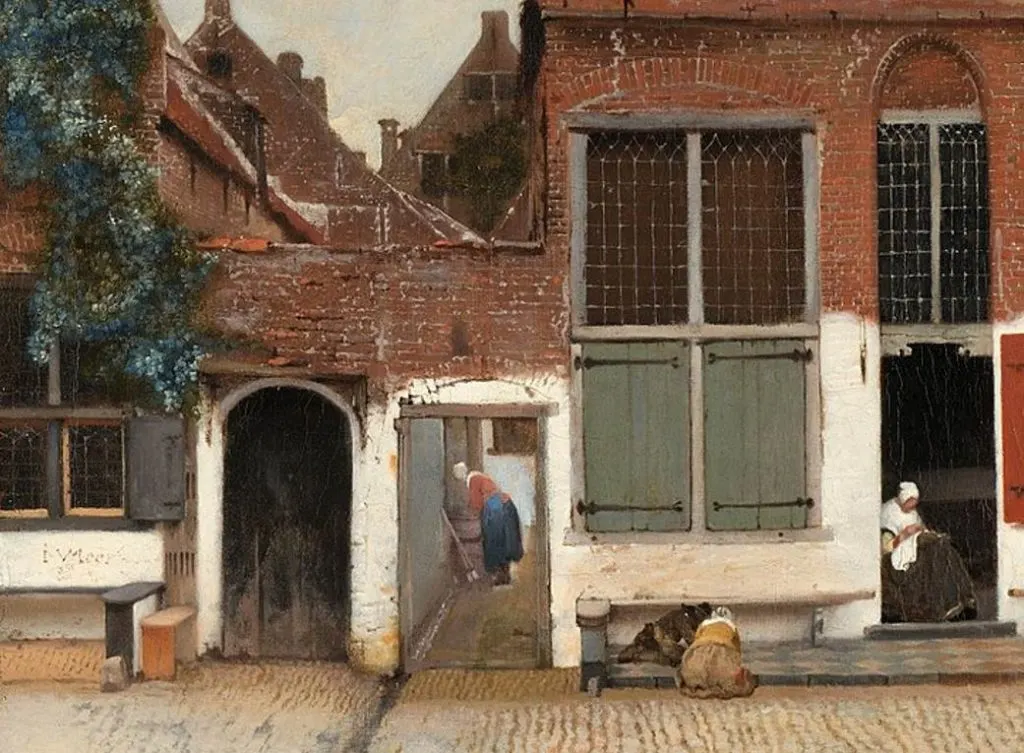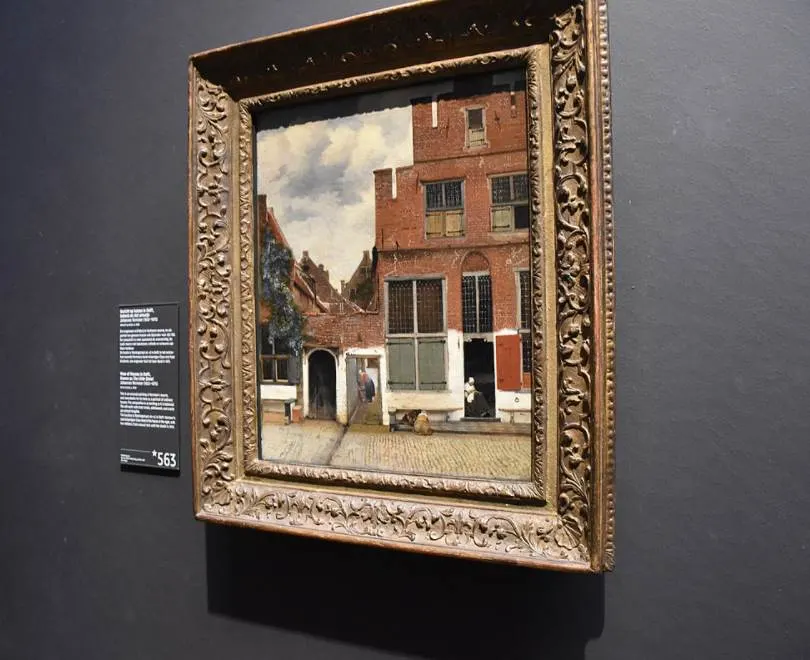Very few paintings in the relatively small oeuvre of Dutch painter and artist of the Dutch Golden Age Johannes Vermeer (1632-1675) depict scenes outside of his own house. That’s why this particular painting is one of the artist’s rare masterpieces.
Let’s take a closer look at some of the most interesting facts about The Little Street by Johannes Vermeer, one of the most intriguing paintings by the Dutch master of the Baroque era.
1. The painting was produced in the late 1650s
little is known about the training that Johannes Vermeer received while he was an emerging artist in his hometown of Delft, a city in between The Hague and Rotterdam in the western part of the Netherlands.
We do know that he lived here his entire life and that he married a local woman in April 1653. In December of that year, he also became a member of the Guild of Saint Luke in Delft, the association for painters and artists.
This means that he was already an established artist with relative local success when he produced The Little Street between 1657 and 1658, a painting that depicts houses in his hometown.

2. It’s 1 of only 3 paintings by the Dutch master depicting his home city
Most of the paintings of Johannes Vermeer were produced inside his own house and depict one or more people doing various things. They often feature female domestic workers who perform chores such as “The Milkmaid” (1658) or “The Lacemaker” (1670).
What’s remarkable is that he only produced 3 paintings depicting scenes in his hometown of Delft. These are:
- The Little Street (1657-1658)
- View of Delft (1659-1661)
- House Standing in Delft
House Standing in Delft has been lost which means that only 2 positively confirmed Vermeer paintings depict scenes outside of his own house.

3. The artist used thick layers of paint to depict the houses
The overall composition of the painting depicts the houses in the foreground contrasting with the sky in the background. To make the painting come alive, Vermeer used a much thicker layer of paint to paint the houses.

These are the types of pigments he used to create this masterpiece:
- Red ochre and madder lake for the brick walls of the houses.
- Lead white and natural ultramarine for the clouds and sky.
- Azurite mixed with lead-tin-yellow for the windows and the plants growing along the wall on the left.
There is also no discussion about the fact that this is a work painted by Johannes Vermeer because his signature “I V MEER” can be seen below the window on the left.

4. The exact location in Delft has long been a topic of discussion
The first question that comes to mind when looking at The Little Street by Johannes Vermeer is “where is this street located?”
Many art historians have pondered this question for decades, providing multiple suggestions that didn’t make sense.
Some of the suggested locations were the Nieuwe Langendijk at the numbers 22 to 26, and the “Voldersgracht,” the place in Delft that the artist grew up.
Today, the “Vermeer Center” is located in the vicinity of the Voldersgracht. The structure in which the information center is housed is a replica of the original Guild of Saint Luke that Johannes Vermeer and his contemporaries joined.

5. Research from a tax register of 1667 uncovered the location in 2015
The debate was finally put to a halt when the exact location was determined in 2015. A tax register dating back to 1667 featured exact measurements of houses in Delft that were located alongside a canal or “gracht.”
Because Littel Street doesn’t depict a canal, this register was overlooked. In 2015, an art history professor at the University of Amsterdam took a closer look and was able to determine the exact location of the houses without any possible discussion.
The depicted houses were 6.3 meters (20.33 feet) wide and were adjoined by two small gates that were each 1.2 meters (3.93 feet) wide. This matched a location in the “Vlamingstraat 40-42,” today in the heart of the city but back then part of the poorer east section of Delft.
The houses along a small canal in this location today date back to the late 19th century, but the small gate of the house on the righthand side is still visible. Part of the painting depicting the woman in the courtyard has been added to the modern buildings, quite amazing.

6. The house on the right side was owned by Vermeer’s aunt
Vermeer didn’t choose this rather obscure location in the city without a good reason. The house on the righthand side was owned by his aunt, a widow named Ariaentgen Claes van der Minne.
The gate of her house was known as the “Penspoort” or “Tripe Gate,” a reference to the fact that this woman sold tripe to make a living.
The artist was most probably nostalgic about this location because both Vermeer’s mother and sister lived alongside this small canal as well, diagonally across from the houses we see in this painting.

7. How big is The Little Street by Johannes Vermeer?
Vermeer wasn’t an artist who produced monumental works of art by t rather delicate little paintings focused on an extreme level of detail. This is also reflected in this relatively small painting.
This painting has dimensions of 54.3 × 44 centimeters (21.4 × 17 inches). His View of Delft, which was produced just a few years later, is about double the size with dimensions of 96.5 × 115.7 centimeters (38 × 45.6 inches).

8. Where is the painting located?
The Little Street by Johannes Vermeer is one of the most remarkable works of art in Dutch history. It depicts ordinary houses as they appeared in the 17th century, a period referred to as the “Dutch Golden Age.”
It’s therefore great that it’s located and on public display in the National Museum of the Netherlands, one of the amazing paintings at the Rijksmuseum in Amsterdam.

